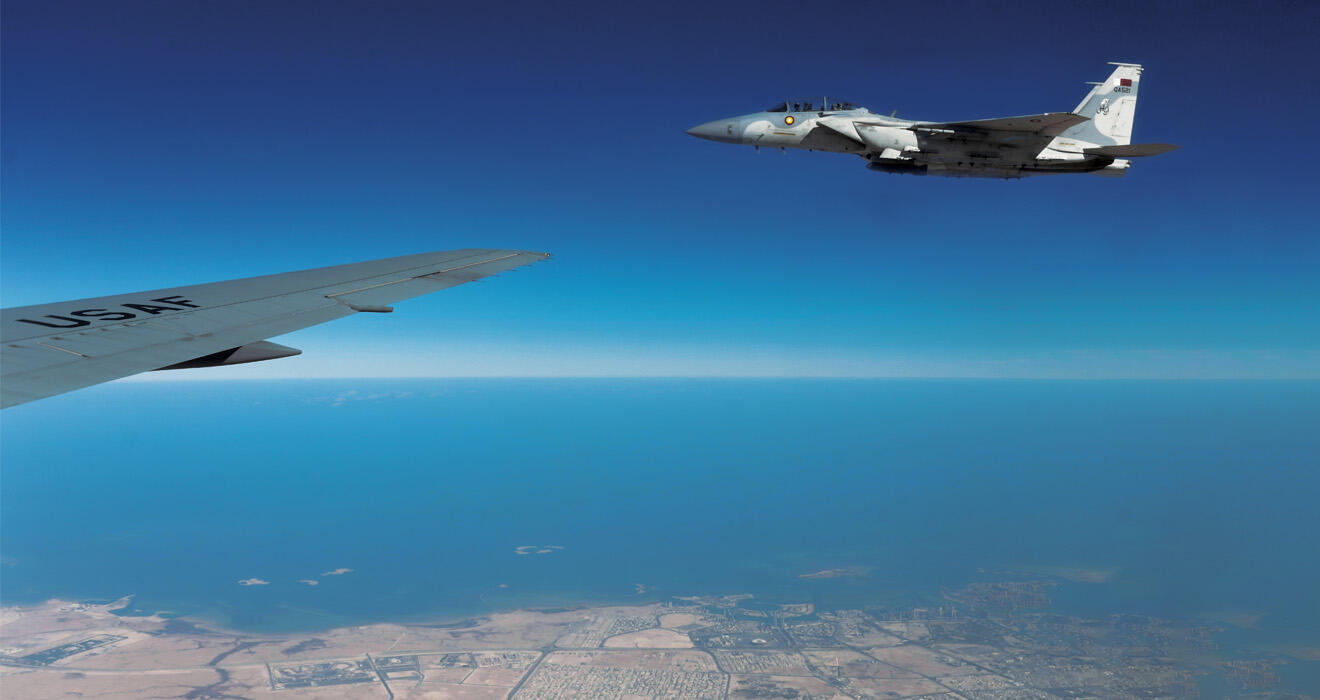
Turbulence Times
Longtime U.S. F-15 pilot Michael Holl ’03 reenters the Middle East tinder box working with the Qatari air force
On the night of June 23, Michael Holl ’03 stood outside his apartment in Doha, Qatar, and watched Iranian missiles streak across the sky. Holl had seen missiles in flight before. Lots of them. Some even aimed at him.
But nothing like this.
Holl is a retired lieutenant colonel in the U.S. Air Force, with 20 years of combat experience flying F-15 fighter jets, including four combat tours in Iraq and Afghanistan and two more in Eastern Europe. For the past two years, he has been sharing that knowledge with the Qatari air force. He is employed by the Delaware Resource Group, a private U.S.-based firm that provides operational support, training, and maintenance to militaries around the world. Holl’s job is to teach Qatari pilots how to fly the three-dozen F-15QAs that Boeing recently sold them.
Qatar is a staunch American ally — President Donald Trump had just visited Doha in May, with Holl flying alongside Air Force One as part of the ceremonial fighter escort — but the small nation situated on the Arabian Peninsula sometimes appears to work both sides of the geopolitical street. Qatar hosts more than 10,000 U.S. military personnel, for example, but the Taliban and Hamas also have offices there. Like most of the oil-rich states bordering the Persian Gulf, Qatar has been an eager buyer of Western weaponry, serving as a forward line of defense against encroachments by America’s principal adversary in the region, the country that was now raining missiles over Holl’s head.
Iran launched its attack in retaliation for an American strike on Iranian nuclear facilities the day before. It had warned the U.S. and the Qataris that an attack was coming, giving them time to evacuate Al Udeid Air Base, headquarters of the Qatari air force and the largest American military outpost in the region. According to multiple news media outlets, the Iranian response was choreographed to make a statement without actually hurting anyone and escalating the crisis. Nevertheless, “statements” sometimes go awry. Thirteen of 14 Iranian missiles were destroyed by Patriot missiles, but their debris fell on populated neighborhoods, although no one was hurt. One Iranian missile, which was not destroyed, missed its target and exploded harmlessly in the desert.
As a civilian technician, Holl had no role in either the American or Qatari response. Training sessions at Al Udeid had been canceled, and Americans in Doha had received a warning from the State Department to shelter in place. By 7 p.m., Holl and his wife, Carolyn Johnson, were in their townhouse complex, about five miles from the base, their three young children asleep upstairs. Though the atmosphere was tense, it seemed like they might enjoy a quiet evening.
“I’ve been in the defense business for a while, and I had some guesses [about] what Iran would do as a response,” Holl says. He was predicting some sort of naval attack. He was wrong.
As the first Iranian missiles reached Doha around 7:30 p.m., the Americans and Qataris launched a battery of Patriots to shoot them out of the sky. Several loud booms shook the Holls’ home like a thunderstorm overhead. Holl and his wife raced up to the third floor, roused their kids, and hustled them downstairs and away from the windows. More muffled explosions followed, probably sonic booms from the missiles, he says. A friend texted Holl photos of the sky streaked with orange contrails.
Then silence, except for the faint whine of air raid sirens in the distance. Believing that the attack was over, Holl and some neighbors wandered out to the courtyard of their complex, comparing notes. Less than 15 minutes later, a second wave of streaks appeared in the sky and another battery of Patriots soared up to intercept them, each kill punctuated by a throbbing orange glow. For all his years of combat experience, Holl had never seen a Patriot intercept before. He was amazed at how high the missiles reached, how fast they moved, how perfectly they struck their targets. For several long minutes, he stood in the courtyard, neck craned upward, awestruck at the explosions above him.
Until Carolyn stuck her head out the door and yelled for her husband to get his rear end back inside.
“Professionally, it was pretty interesting,” Holl says now, a little sheepishly. “It was kind of incredible to watch the Patriot systems do their work. But not a super bright thing for a husband and dad to do at the time.”
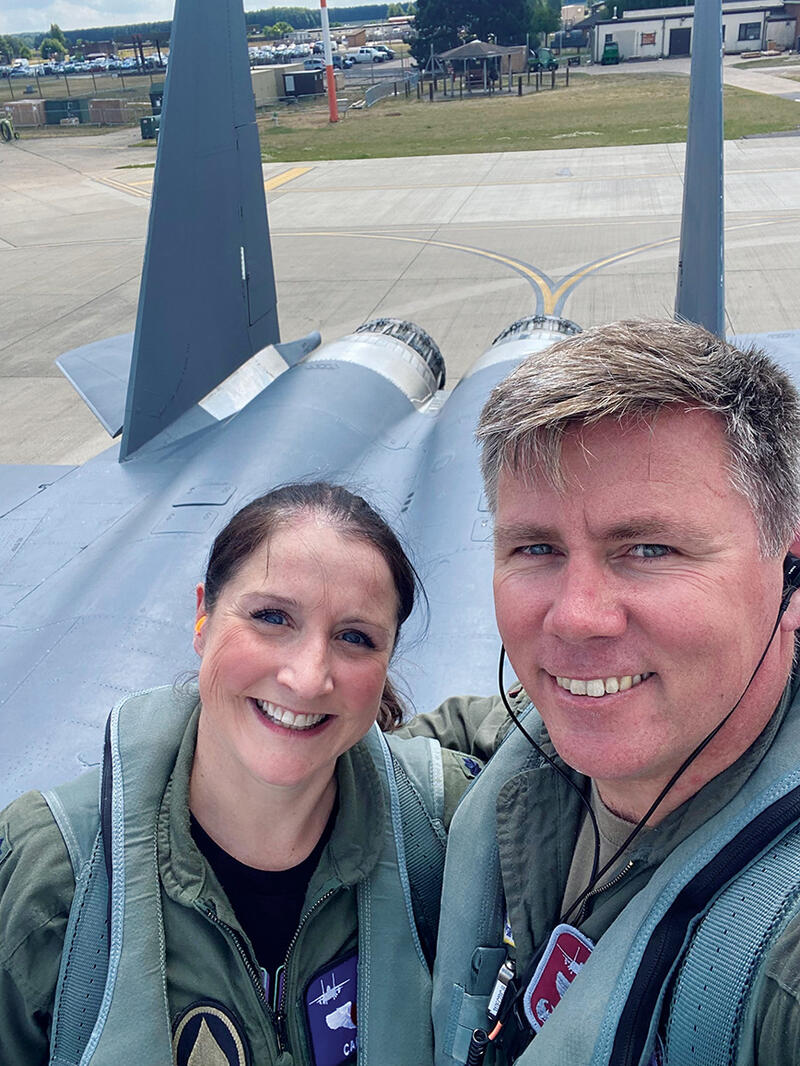
Within an hour, it was all over. Families distracted their kids with cartoons before putting them back in bed. School was canceled the next day, and the base remained closed. “It was like a cross between a tornado and a snow day,” Holl recounts. By the end of the week, life in Doha was back to normal. One of Holl’s assignments before he and his family left for a preplanned vacation was to fly one of the F-15s back to Al Udeid from where it had been moved for safety. It was the shortest sortie he had ever flown, just six minutes.
Luckily for Holl, flying fighter jets is all he has ever wanted to do. He was 5 when the original Top Gun movie came out in 1986, and he set his young sights on being the next Maverick. Though Holl long aspired to attend the U.S. Naval Academy, a visit to campus convinced him to attend Princeton instead. He joined the Air Force ROTC because the Navy didn’t have a program at Princeton. (U.S. Defense Secretary Pete Hegseth ’03 was in Princeton’s Army ROTC program at the same time, but Holl says they didn’t know each other.)
On the morning of Sept. 11, 2001, at the beginning of his junior year, Holl was doing ROTC training at Rutgers when the Twin Towers were struck. Suddenly, his commitment to active-duty military service became a much more serious proposition. Holl, who says he was inspired to serve his country, was not deterred. Upon graduation, he went to Air Force flight school in Columbus, Mississippi, and began training on F-15s. He has flown only variations of that plane ever since.
As a class, fighter pilots are laconic. Of course they have a stash of good stories, which they will tell if prodded, but they tend to understate them and pepper them with acronyms and nicknames. Allied forces, for example, are “friendlies.” The person flying in the backseat of the F-15E Strike Eagle (which Holl calls “the family version” because it has two seats), technically known as the weapons systems officer, is referred to as the “wizzo.”
One night in Afghanistan, he was called to provide air support for a team of coalition soldiers on top of a mountain in the Korangal Valley, known as the “Valley of Death.” Someone had breached the electronic perimeter they had strung around their camp, but they couldn’t tell where and couldn’t see anything. Buzzing around the Afghan mountains at several hundred miles an hour in pitch darkness, Holl and his wizzo located the infiltrators using heat sensors, then laid down some very unfriendly fire.
“It’s a crazy night when you’re dropping 500-pound bombs and friendlies are 100 meters away,” Holl says. “That gets your attention.” It also instills a quiet pride. Speaking of his colleagues on the mountaintop, Holl says modestly, “I think those guys would have had a bad day if we hadn’t been able to find them.”
As the war on terror wound down, Holl was reassigned to new conflicts. In his last deployment, as a squadron commander based in the U.K., Holl flew NATO reconnaissance missions across eastern Poland hoping to ensure, as he puts it, “that nothing from the Russia-Ukraine war strayed across the border.” On the morning of Feb. 20, 2023, when President Joe Biden rode a train across the Polish frontier to meet Ukrainian President Volodymyr Zelenskyy in Kyiv, Holl was one of four F-15 pilots in “alert posture” a few miles from the border, their planes gassed up, loaded, and ready to move if anything went sideways.
“Thank God, nothing was needed,” he says.
By that time, Holl was approaching 20 years of active service and ready, in his words, to “hit the retirement button.” Though he still dreams of teaching middle school math and science someday, Carolyn, a physician, got a job in Doha helping the U.S. State Department resettle Afghan refugees. (The office has since been shut down by the Trump administration.) Holl signed on with Delaware Resource Group and kept flying.
He is one of 16 instructors working with the Qataris. Holl’s students already know how to fly before he instructs them on the finer points of aerial strategy in the F-15QA. They work in English, both in a simulator and hands-on in flight. Holl spends at least part of every workday in the place he loves best — the sky.
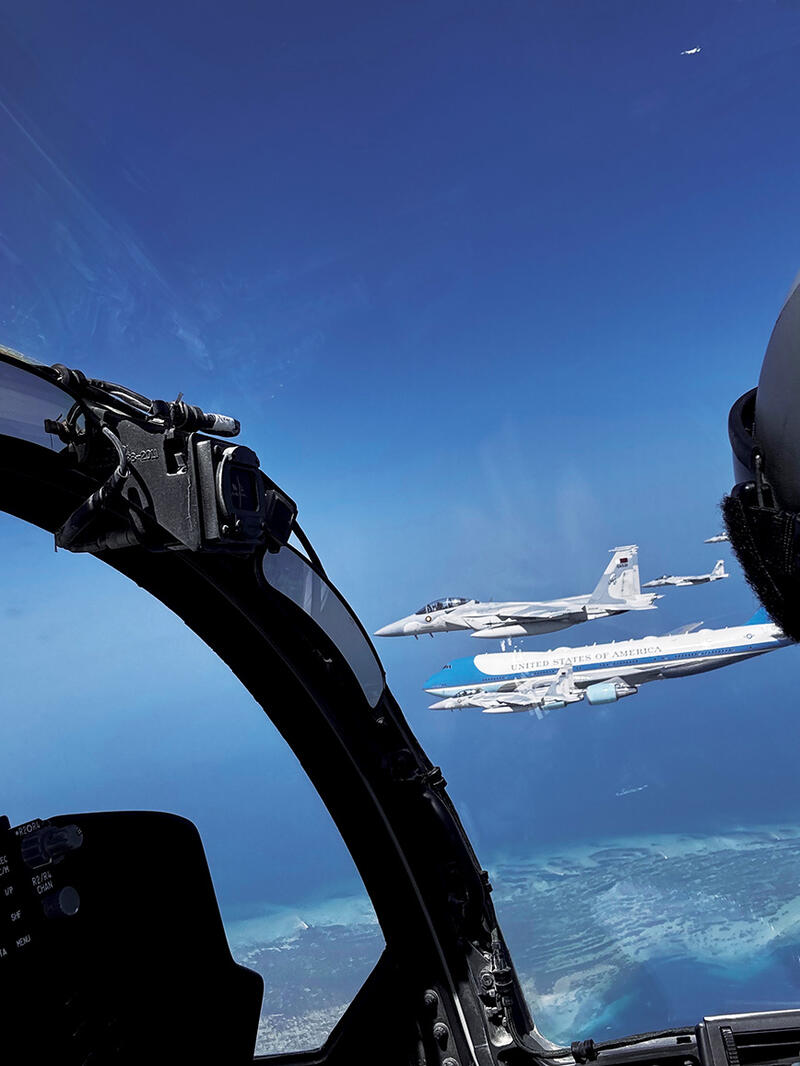
Though 2.6 million people live in Qatar, barely a tenth of them are citizens; the rest, like Holl, are guest workers. It is an immensely rich autocracy, and Iran is not the only enemy in the neighborhood. In 2017, a group led by Saudi Arabia, Egypt, the United Arab Emirates, and Bahrain cut diplomatic ties with Qatar and imposed a land blockade, accusing it of harboring terrorists and cozying up to Iran. (Sea and air routes into Qatar remained open, though severely restricted.) The blockade, which eventually expanded to include 14 countries, was not lifted until 2021.
Opinions differ on where Qatar fits in the global order. “They play all sides,” says Bernard Haykel, a Princeton professor of Near Eastern studies who studies regional politics. “They’re very close to the Americans, but they also have deep connections to the Muslim Brotherhood.” Qatar has tried to use those ties to its advantage, serving as a sort of Arabian Switzerland, providing a venue for mediations between Israel and Hamas or the U.S. and the Taliban. Qatar uses its oil wealth to boost its international profile, turning Doha’s Hamad International Airport into a global hub, hosting the 2022 World Cup, and bidding for the 2036 summer Olympics. The news network Al Jazeera is headquartered there, as well. F-15s and other advanced Western military technology, Haykel adds, are the ultimate luxury goods for the petrostate that has everything.
“Qatar punches well above its weight through money and offering patronage to different ideological groups, some of whom are very shady,” Haykel says. That patronage extends to the U.S., as well. Attorney General Pam Bondi and FBI director Kash Patel have both been lobbyists on the Qatari payroll, and members of the Trump family have extensive business dealings there. During President Trump’s visit this summer, the Qatari royal family gave him a Boeing 747 to serve as the new Air Force One, a gesture that many American commentators criticized as suggesting a quid pro quo.
Holl is quick to emphasize that this is just his own opinion — he’s an expat, after all, not an expert — but he believes that close U.S. ties with Qatar benefit both countries, as well as the region.
“I see a lot of value in our role here,” he says. “The better we represent America, the U.S. military, and the general Western system, the more likely it is for Qatar to continue to have regional influence that provides stability here.”
Right now, there is again clear flying weather over Doha. But as Holl knows as well as anyone, the skies in that part of the world can change quickly, and with little warning.
Mark F. Bernstein ’83 is PAW’s senior writer.



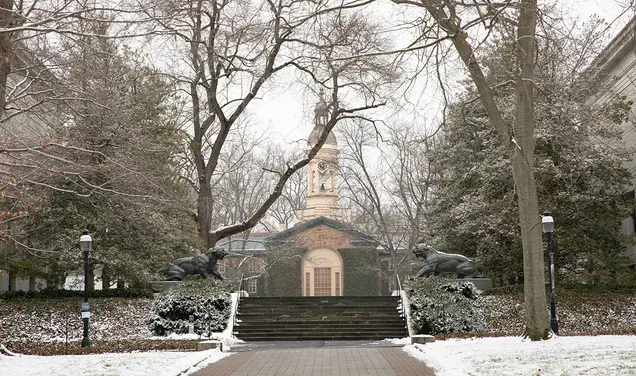
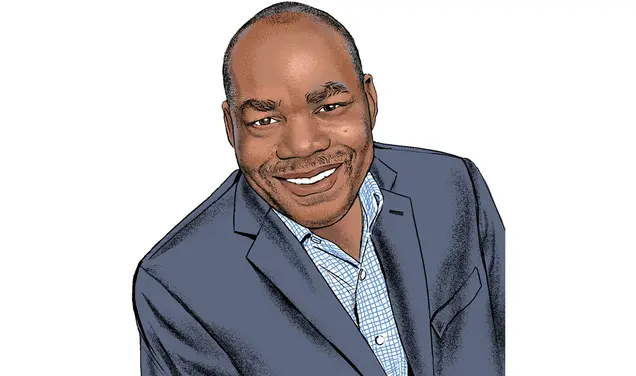

1 Response
Rocky Semmes ’79
3 Months AgoDefending the Western System Against Funding Cuts, Unraveling
The September PAW was resplendently ripe with an array of arresting articles highlighting the unconventional careers of some fascinating alumni. One of these was Michael Holl ’03, a former lieutenant colonel F-15 fighter pilot, retired from the U.S. Air Force. PAW senior writer Mark F. Bernstein ’83 reported Mr. Holl’s belief that close U.S ties with Qatar benefit both nations.
Mr. Holl was quoted as seeing the value, in that Middle Eastern region, of representing “America, the U.S. military, and the general Western System ...” But what went irresponsibly unaddressed in Mr. Holl’s comments, and in that article, is the current administration’s rapidly rampant unraveling of that vaunted Western system.
Two notable examples alone (among many) of that unraveling include Secretary of State Marco Rubio’s boast of funding cuts totaling 83% of USAID programs; and the enigmatic evisceration by this administration of the incalculably valuable and longstanding Voice of America broadcasting.
In what perhaps is entirely only a coincidence, earlier this year a Kremlin spokesman went on record saying that “the new administration is rapidly changing all foreign policy configurations. This largely aligns with our vision.” Vladimir Putin (treated deferentially by this administration recently in Alaska) and his Kremlin have repeatedly made their anti-Western ideology consistently clear. Perhaps there is nothing here. Perhaps these are nothing but random unrelated developments.
I served six years in the Naval Reserves (1980-86), and as one veteran to another, I ask Mr. Holl to join me (and all of our fellow service-member alumni) in being ever mindful of, and attentive, to current events. You and I both made an oath without expiration to uphold and defend our U.S. Constitution, against all enemies foreign and domestic. As Mr. Bernstein’s article cautiously concluded, correctly, “... the world can change quickly, and with little warning.”